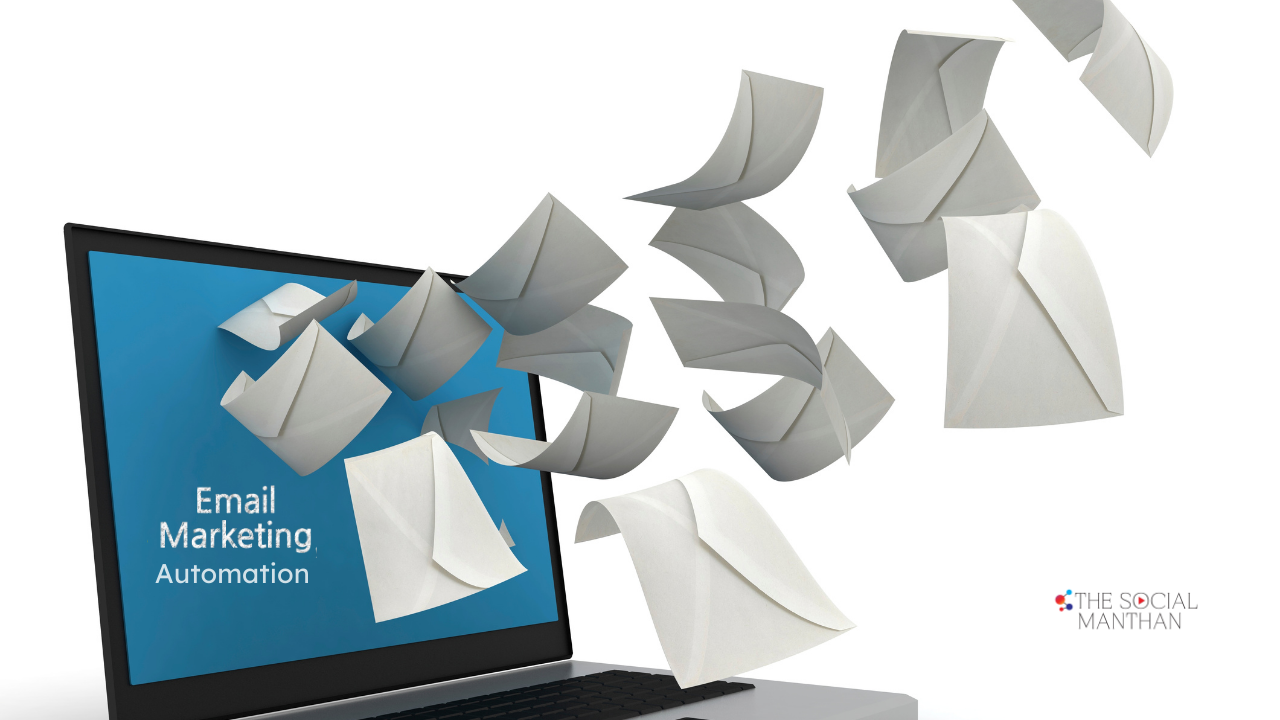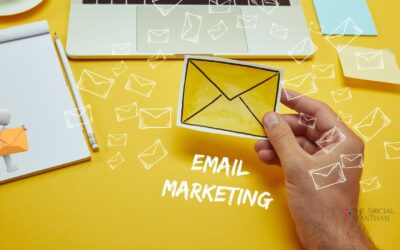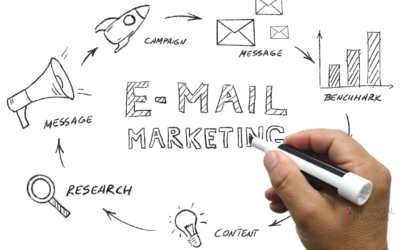In the fast-paced world of digital marketing, efficiency and personalization are key to success. Email marketing automation is a powerful tool that allows you to deliver targeted, timely messages to your audience without manually crafting and sending each email. By automating your email marketing, you can save valuable time while boosting engagement, increasing conversions, and nurturing relationships with your subscribers.
In this article, we’ll explore how email marketing automation works, the benefits it offers, and best practices for implementing it effectively.
1. Understanding Email Marketing Automation
Email marketing automation involves using software to send automated, personalized emails to your subscribers based on specific triggers or actions they take. Instead of manually sending emails to each subscriber, you can set up automated workflows that run in the background, delivering the right message at the right time.
Why It Matters:
- Efficiency: Automation saves time by streamlining your email marketing efforts, allowing you to focus on other aspects of your business.
- Personalization: Automated emails can be tailored to individual behaviors and preferences, making them more relevant and engaging to your audience.
- Consistency: Automation ensures that your email campaigns are consistent, delivering messages at the optimal time without delays or gaps.
Action Steps:
- Choose the Right Platform: Select an email marketing automation platform that suits your needs, such as Mailchimp, HubSpot, or ActiveCampaign.
- Identify Key Triggers: Determine the triggers that will initiate your automated emails, such as a subscriber joining your list, downloading a resource, or abandoning a cart.
- Map Out Workflows: Plan the sequence of emails that will be sent based on different triggers, ensuring that each email serves a specific purpose in the customer journey.
2. Personalize Your Emails for Better Engagement
One of the most significant advantages of email marketing automation is the ability to personalize your emails at scale. Personalized emails perform better than generic ones, leading to higher open rates, click-through rates, and conversions.
Why It Matters:
- Increased Relevance: Personalized emails resonate more with recipients because they address their specific interests, needs, and behaviors.
- Higher Engagement: When subscribers receive content that is tailored to them, they are more likely to engage with it, leading to better results.
- Stronger Relationships: Personalization helps build stronger relationships with your subscribers by showing that you understand and value their preferences.
Action Steps:
- Use Dynamic Content: Incorporate dynamic content blocks in your emails that change based on the recipient’s preferences, behavior, or demographic information.
- Segment Your Audience: Divide your email list into segments based on factors such as purchase history, location, or engagement level, and tailor your emails to each segment.
- Include Personalization Tokens: Use personalization tokens, such as the recipient’s name, in the subject line and email body to make the email feel more personal.
3. Set Up Automated Welcome Sequences
First impressions matter, and a well-crafted welcome sequence can set the tone for your relationship with new subscribers. Automated welcome emails introduce your brand, provide valuable information, and guide subscribers toward their next steps.
Why It Matters:
- Onboarding: A welcome sequence helps onboard new subscribers, familiarizing them with your brand and offerings right from the start.
- Engagement: Welcome emails typically have high open rates, making them an excellent opportunity to engage new subscribers early.
- Conversion: By guiding new subscribers through a well-thought-out sequence, you can encourage them to take desired actions, such as making a purchase or exploring your content.
Action Steps:
- Craft a Warm Welcome Email: Start with a friendly, informative email that introduces your brand, thanks the subscriber for joining, and sets expectations for future emails.
- Provide Value Early On: Offer something valuable in your welcome sequence, such as a discount, a free resource, or access to exclusive content.
- Guide Subscribers: Include clear calls to action (CTAs) in each email of your welcome sequence, directing subscribers toward the next step, whether it’s exploring your blog, following you on social media, or making a purchase.
4. Leverage Behavioral Triggers for Targeted Messaging
Behavioral triggers are actions that subscribers take, such as browsing a product page, clicking on a link, or abandoning a shopping cart. By setting up automated emails based on these behaviors, you can send highly relevant messages that encourage subscribers to take the next step.
Why It Matters:
- Timely Engagement: Triggered emails are sent in response to a subscriber’s action, making them highly relevant and timely.
- Higher Conversions: Behavioral triggers allow you to send targeted messages that address the subscriber’s current needs or interests, leading to higher conversion rates.
- Reduced Cart Abandonment: Automated cart abandonment emails can remind customers of the products they left behind and entice them to complete their purchase.
Action Steps:
- Set Up Cart Abandonment Emails: Configure automated emails to be sent when a subscriber abandons their shopping cart, offering reminders, incentives, or product recommendations to encourage completion.
- Send Browse Abandonment Emails: Trigger emails to subscribers who browse specific products or categories but don’t make a purchase, offering related products or further information.
- Follow Up on Engagement: Send automated follow-up emails based on specific actions, such as clicking a link in a previous email or attending a webinar, to nurture the lead further.
5. Automate Re-Engagement Campaigns
Not all subscribers will stay engaged over time, but that doesn’t mean you should give up on them. Re-engagement campaigns are automated emails designed to win back inactive subscribers and rekindle their interest in your brand.
Why It Matters:
- Reclaim Lost Opportunities: Re-engagement campaigns give you a chance to bring back subscribers who have lost interest, turning them into active participants again.
- Clean Up Your List: By identifying and re-engaging or removing inactive subscribers, you can maintain a healthy, engaged email list.
- Boost Deliverability: A clean and engaged email list improves your sender reputation and ensures better deliverability rates.
Action Steps:
- Identify Inactive Subscribers: Define criteria for inactivity, such as not opening or clicking emails for a certain period, and segment these subscribers.
- Craft a Compelling Re-Engagement Email: Send an automated email that acknowledges the subscriber’s inactivity, offers an incentive to re-engage, and asks for feedback on how you can better meet their needs.
- Make It Easy to Opt Out: Give subscribers the option to update their preferences or opt out if they’re no longer interested, helping you maintain a healthy list.
6. Analyze and Optimize Your Automation Workflows
Setting up email automation workflows is just the beginning. To maximize their effectiveness, you need to regularly analyze their performance and make data-driven adjustments.
Why It Matters:
- Continuous Improvement: Analyzing performance allows you to identify what’s working and what needs improvement, helping you optimize your campaigns for better results.
- Better ROI: By refining your workflows, you can increase engagement, conversions, and overall return on investment (ROI) from your email marketing efforts.
- Adaptability: Regular analysis ensures that your automation workflows stay aligned with your audience’s evolving preferences and behaviors.
Action Steps:
- Monitor Key Metrics: Track metrics such as open rates, click-through rates, conversion rates, and unsubscribe rates to gauge the effectiveness of your automated emails.
- A/B Test Elements: Conduct A/B tests on different elements of your emails, such as subject lines, CTAs, or email copy, to determine what resonates best with your audience.
- Refine and Update Workflows: Use the insights gained from your analysis to refine your automation workflows, making adjustments to improve performance and better meet your goals.
Conclusion
Email marketing automation is a powerful strategy that can save you time, increase efficiency, and boost engagement with your audience. By leveraging automation to deliver personalized, timely, and relevant messages, you can build stronger relationships with your subscribers and drive more conversions. From setting up welcome sequences and behavioral triggers to automating re-engagement campaigns and analyzing performance, these best practices will help you make the most of your email marketing efforts.
Remember, successful email marketing automation requires continuous testing, monitoring, and optimization. By staying proactive and data-driven, you can keep your campaigns effective, engaging, and aligned with your business goals.






